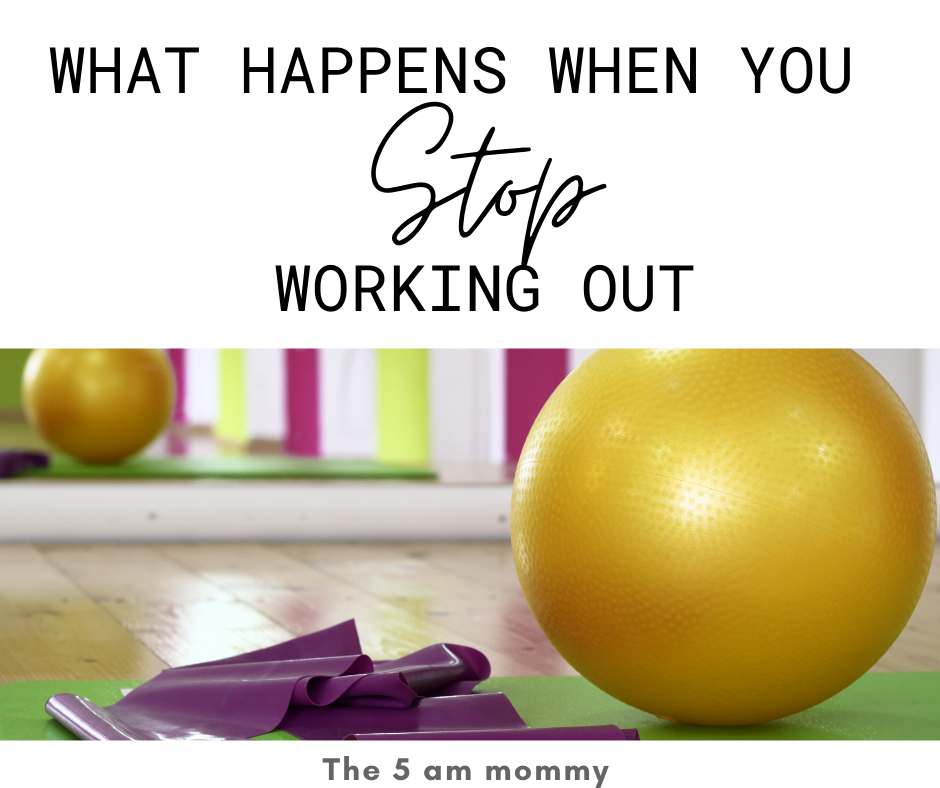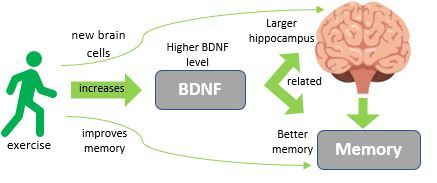10 Oct How does body react to no exercise for a month?
Table of Contents
What happens when there is no exercise a month for two weeks?
Life happens to every one of us, it is not always that everybody is able to work out or give time to exercising. Have you gone through a “No exercise for a month spell?” Well, there might be a myriad of valid reasons for not being on track exercise wise which may include shifting from one place to another, any injury, accidents, loss of dear ones, divorce or break up. It is not always easy to pull up and start working out. We may fool our brains but it is very important to be ready mentally for taking on the physical activity.
A rest day often turns into a couple of them and then the feeling of not doing anything creeps in and there you go with no activity for several days which brings in the following physiological changes.
Here is a timeline of what happens when you stop working out:
First 5-6 days: Loss in endurance and overall lethargy would creep up,
The first couple of weeks: Reduction in muscle mass thus increasing weight.
More than two weeks: Increased weight reduction in mobility
How does the body perceive “no activity”?
The first question that should be answered for the muscles is that ” hey, but you worked out yesterday, made me sore and now why you have stopped working out? Don’t you want me to gain strength and increase muscle mass.”? This is called as DOMS (Delayed Onset of Muscle Soreness) which you feel after you wake up the next morning after workout by the habit of which muscles think that they are not required the way they are, they need to become stronger. Suddenly if you stop exercising, the message which is received by the muscles is that their improved version is not required and it is ok to shrink and go back to normal.
How does the brain perceive “no exercise”?
Taking a day off would not change how your brain would function but prolonged duration of no exercise results in memory loss especially if you are in the old age bracket.
Physical activity is directly connected to brain health and this paper cites some interesting findings.
All About BDNF ( brain-derived neurotrophic factor ) and exercise
BDNF which is the most talked about thing in the fitness circuit and research circuit is nothing but a Brain-Derived Neurotrophic Factor) that serves as a fertilizer to the brain.
It helps to maintain the life of the brain cells and also grows new cells if required. As against a theory where the brain was considered as not much dynamic organ, now the scientists believe that the brain is able to adapt, grow and change depending upon the activity levels that we expose it to. Neuroplasticity is the exact term that indicates the adaptability of the brain and it is said that BDNF helps the brain to keep its neuroplasticity intact.
Exercise, studies have shown, leads to the release of proteins and other molecules from muscle, fat, and liver tissue that can affect levels of BDNF ( Brain-derived neurotrophic factor) and other agents that spur neurogenesis, speed new-neuron maturation, promote brain vascularization, and even increase the volume of the hippocampus in humans ( As per thescientist.com).
More BDNF = Better neuroplasticity.
How do I increase my BDNF?
Being consistent with exercise is one of the surest ways to increase BDNF. What is more interesting is how to keep up at it when you are off your usual fitness regime add in some interesting way to workout such as
Trail running:
30 minutes of jogging is the best way to boost BDNF but trail running also helps to aid it especially if it is challenging. Challenging your brain while increasing its neuroplasticity is the cherry on the cake.
Dancing:
Many people swear by it, learn new moves, and work your way up to fitness. If you are not a great dancer try Zumba, it is the best way to burn fat while being at the beats. You learn and earn your fitness in Zumba. If you love classical dance form, sign up for it.
Functional Exercise:
Do you remember working your way up to the monkey bars, crawling through the sliders and tunnels? People enjoy functional training like anything. Get that spartan race done or at least train for it. You will have a time of your life. Next time when you are waiting at the park for your little one grab that bar and start your functional training.
Physiological Changes that happen due to not working out:
Grumpiness:
The foremost sign of not doing workouts for longer than 4 weeks is that you feel grumpy without that happy hormone which workout generates. As per outsideonline.com, our body actually fights the challenges better when it is in the habit of working out. The body’s response to challenges is compromised when we leave it without much exercise.
Rise In Blood Pressure:
Let us first understand what happens when we workout. With exercise, our arteries widen for better blood circulation and they also tend to stay larger for 24 hours. Without activity, you might tend to lose on the heart rate peaks bringing the blood pressure to baseline.
In the short term, your blood pressure will change within a day depending on whether you work out or not. “With blood pressure, things happen very quickly, and they also cease very quickly,” says Linda Pescatello, a blood-pressure researcher at the University of Connecticut. Exercise causes increased blood flow, meaning your arteries temporarily widen to facilitate greater circulation. They tend to stay slightly larger for about 24 hours, but if you don’t get your heart rate up within a day, your blood pressure returns to baseline. (Reference)
Reduction in VO2 Max
How long does it take to lose muscles if you stop working out?
If you do not train for weeks, you tend to lose muscle mass. 3-4 weeks of the gap in training would result in muscle loss which may be quickly recovered as per the article
Muscle memory plays an important part in bringing back the muscle mass due to detraining.
Reduced Flexibility
When we train, it is primarily for strength, endurance, and flexibility. If you are going through a period of detraining ( stalled workouts) as it is called the flexibility may reduce up to 20%. If you are doing Yoga and suddenly due to some reason you stop doing it you may tend to lose your flexibility. Bed rest or being immobile are reasons why muscle may tend to lose their form and result in atrophy ( Though it happens over a longer period than 3-4 weeks). Reduced flexibility is one of the key issues in the aged population.
Will I gain weight if I stop working out?
Weight loss or weight gain depends on what you eat. When it is a simple equation of calories in and calories out as mentioned in our weight loss for beginners, a little detraining or no exercise would not cause weight gain as long as you do not stuff yourself with loads of junk food.
We usually workout for weight loss and reducing fat percentage. If you stop working out as mentioned below in this article, the calorie requirement of the body reduces quickly even before we realize it. Most of us detrain due to injury or some factors which we can not avoid. The first thing on our mind often is not calorie intake. It is just the survival, in that case, we might end up loading up those calories which are not required. This results in increases fat mass thus weight gain.
What to do to prevent muscle loss due to a stalled workout regime?
A stalled or stopped workout regime totally sabotages your efforts made in the direction of muscle tone/ muscle gain or weight loss. There are some incidents in life that may prompt you to stop working out for some time which is absolutely okay. Here is how you can prevent muscle loss and keep the momentum going.
What happens to the calorie requirement of the body?
The calories that need to be consumed for general metabolism need to be reduced as you stop working out. Naturally, you move less, your muscle mass will start reducing stalling the calorie burn which happens due to muscles. Additionally, if you eat as much as you were eating while working out, it tends to result in increased fat mass. Your clothes will fit snugly and scale also might show the difference.
How to Balance the training needs and body requirements?
Sometimes the overburden of working out every day takes the whole fun out of it. You can comfortably prevent the ill effects of detraining by training only one day per week. Isn’t that a win-win? Keeping the training intensity the same, you can reduce the training volume ( the number of reps and sets) by 20-30%, reducing frequency is also a good choice.
The best part about detraining is that muscle loss can be regained back in some time given regular work out schedules and by understanding the requirements of the body.
Detraining can be tricky, take it as it comes. The added pressure of detraining would create more chaos. Exercise is for a better mind and body. Reminding yourself of your self-worth and not attaching it to exercise or anything for that matter is the most important aspect of healthy living.
Conclusion:
There are a number of articles that detail the effects of detraining on the body. But the most important thing is to understand what happens to our body by experiencing it first hand. If you just let the effect of training go, it is going to be sabotaging your efforts and just disrespecting the why of your journey. It is always easy to tell someone to be consistent but very difficult to keep the momentum alive. Mix match, change your short term goals. Make them appear easy. Change the pattern of training but it is important to keep at it. Take a leisure break if you want, and get back at it with more vigor. Signing up for a hobby class that involves physical activity may also be helpful.
Remember, nothing is important for you than your well-being. If you are recovering from your injury like me, just take enough time, plan your goals for 3 months and keep at it. Having better mental health is a priority when you are injured. So, let us first be fit mentally.
If you have any queries or questions regarding the article, please comment below. I would love to answer.
References: https://www.ncbi.nlm.nih.gov/pmc/articles/PMC6770965/



No Comments